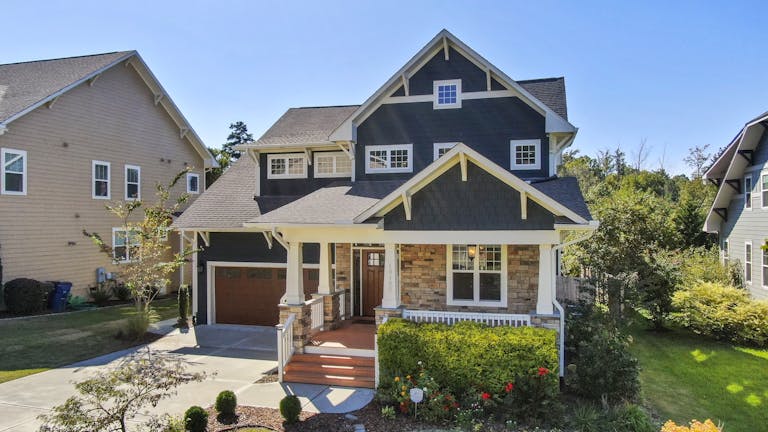Rental pricing often focuses on “top-line” rents, but successful property managers know there’s a bigger picture: net income. In this article, we’ll walk through the essential factors that form the MoveZen Rental Pricing Method, exploring how our long-term, occupancy-driven approach leads to higher returns—without risking high vacancy or subpar resident quality.
1. Why Net Income Matters More Than Rent Rate
1.1 The Vacancy Trap
A house that sits empty for even a few months can lose 30% or more of its annual rental income. In slower markets, holding out for top-dollar rent can backfire. Instead, MoveZen focuses on fast occupancy with high-quality residents who are more likely to stay long-term, protecting your bottom-line profits.
1.2 Beyond Gross Rent
Gross rent is only one piece of the puzzle. Repairs, upkeep, fees, and extended vacancy can all chip away at the final check an owner receives. We target what an owner puts in their pocket at the end of each year, which means balancing rental rates, turnover, repair costs, and fee structures—an art as much as a science.
2. Our Five-Year Perspective
2.1 Profit Performance Over Time
Most of our clients stay for around five years, and that’s also the time horizon we use to evaluate success. Yearly metrics can be misleading if you don’t factor in vacancy dips or higher maintenance in certain periods. Five-year net income captures the true picture: total rent collected minus unoccupied days, minus maintenance, minus fees.
2.2 Compounding Advantages
When you avoid expensive turnover, maintain consistent rent checks, and do strategic, high-ROI updates, you’re harnessing a compounding effect—akin to a great investment fund that steadily beats average returns. That’s why we liken great property management to Warren Buffett’s long-term mindset, compared to the short-sighted approach of chasing a high listing price.
3. Great Management vs. Alternative Management
3.1 The Performance Gap
Our data shows a significant divergence between “Great Management” and “Alternative Management.” Even a great manager charging a large management fee of 15%, will outperform average service at a 5% fee because they:
Meanwhile, lower-fee alternatives often face 30% higher vacancy and must drop rents 15% below market to attract interest. This approach quickly erodes owner returns, as shown by net income comparisons over 5 to 8 years.
3.2 Maintenance & Turnover Costs
We typically account for a 10% maintenance deduction and a major turnover expense after about three years. In mid-tier single-family rentals, real-world turnover costs and deferred maintenance often converge around $6,000 per event—especially if you wait until move-out to tackle upgrades. By planning ahead and spreading improvements, our owners avoid unexpected financial shocks.
4. Key Elements of Rental Pricing Success
4.1 Quality Residents Over Short-Term Concessions
We rarely rely on gimmicks (e.g., first-month-free deals) because high-quality residents prioritize long-term affordability over short-term perks. Concessions can lure in residents who may be stretched financially, leading to late payments, frequent turnover, or subpar property care.
4.2 Skating Where the Puck Is Going
Rental markets shift every few months—often more than the sales market. Our approach is informed by local market intel, real-time listing data, and ongoing research into regional and national trends. Pricing too high in a slowing market can mean months of vacancy; pricing too low when demand spikes leaves money on the table.
5. What Works: Practical Upgrades & Smart Strategies
1. Allowing Pets
2. Outdoor Living Space
3. Well-Cared vs. Flashy
4. Timing the Listing
5. Convenient Self-Showings

6. What Doesn’t Work: Common Pitfalls
1. Banning Pets
2. Applying Sales Market Logic
3. Small Bedrooms & Confusing Layouts
4. Forcing Occupied Showings
5. Relying on Past Rates or Mortgage Costs
7. Managing Maintenance & Turnover
7.1 Deferred Maintenance Strategy
At MoveZen, we often defer certain non-critical fixes until residents move out. This keeps rent flowing and inconveniences nobody in the short term. However, we encourage owners to budget ahead for those costs, to avoid sticker shock when it’s time for larger repairs or upgrades.
7.2 Clear Communication
Despite early warnings, many owners are still surprised by a $5,000 or $6,000 turnover expense. We strive to improve how we communicate these costs upfront, emphasizing that spreading repairs over time or building a reserve can make large updates less disruptive.

8. The Pet Policy Advantage
8.1 Pet Fees vs. Wear & Tear
We’ve found any minor damage from pets is often covered by pet fees and a solid security deposit. The broader strategy of appealing to a wider (80%+) renter pool pays off in more consistent occupancy and better resident quality.
8.2 ESA Considerations
Emotional Support Animals (ESAs) can’t legally be restricted by pet policies or fees in many cases. We build awareness and standard procedures for owners, but there’s no guaranteed defense against legitimate ESA claims. By proactively embracing pet-friendly policies, owners often reduce risk while capturing higher rents.
9. Bringing It All Together: A Long-Term Game
Rental management is about synergy. Well-executed showings, top-notch repairs, smartly priced listings, pet acceptance, and focus on net income create a domino effect of positive results. Conversely, underperformance compounds the other way: vacancy piles on costs, lowers rent potential, and undermines your asset’s reputation.
9.1 Consistent Occupancy as the Cornerstone
Every month vacant can knock out 8% of annual gross rent—a major portion of your potential profit. By consistently keeping homes filled and nurturing relationships with high-quality residents, we maintain an edge in even the most competitive markets.
9.2 Future-Proofing Through Adaptation
From seasonal shifts to emerging market data, our approach is never static. We keep reading, adjusting, and testing. Whether it’s local market intelligence or nationwide trends, MoveZen invests in continuous improvement to keep your properties aligned with where the market is going, not where it has been.
Final Thoughts: Why the MoveZen Method Works
At MoveZen, we care about the bottom line—the net cash an owner banks after all is said and done. That means:
The rental market can be a stressful place if you chase every passing fad or cling to outmoded thinking. By leaning on our data, our experience, and our continuous market research, we help owners realize the long-term gains they deserve while minimizing the headaches they don’t.
Ready to explore a more profitable rental future? Get in touch with MoveZen to learn how we tailor our pricing and management approach for each property’s unique situation. When it comes to maximizing net income and keeping your investments healthy, our proven methods stand out—no gimmicks, no games, just consistent results for the long haul.











